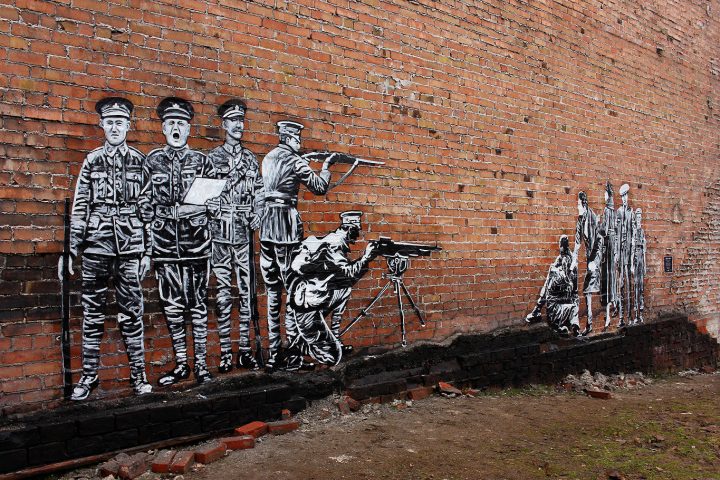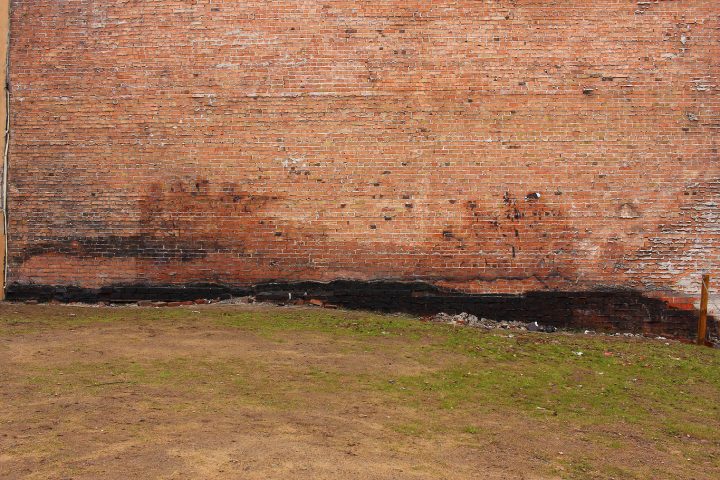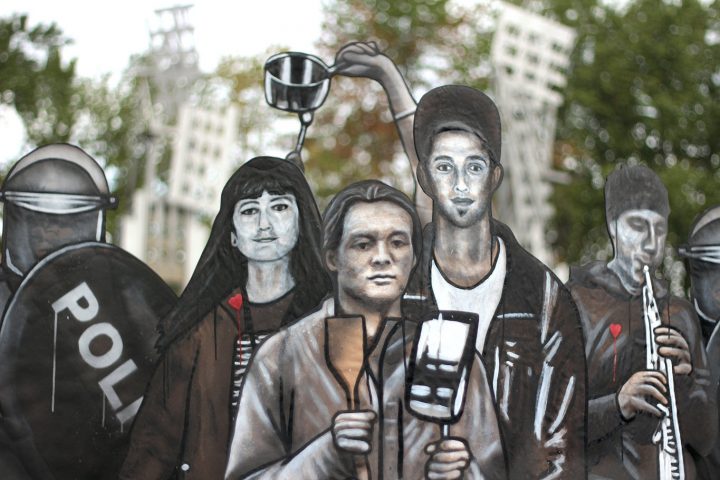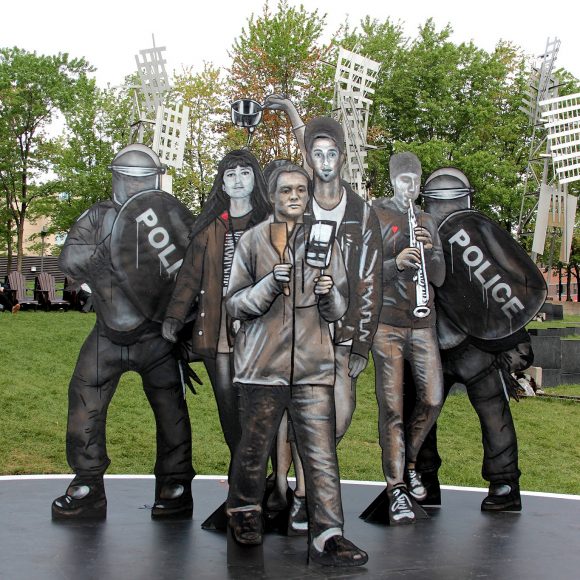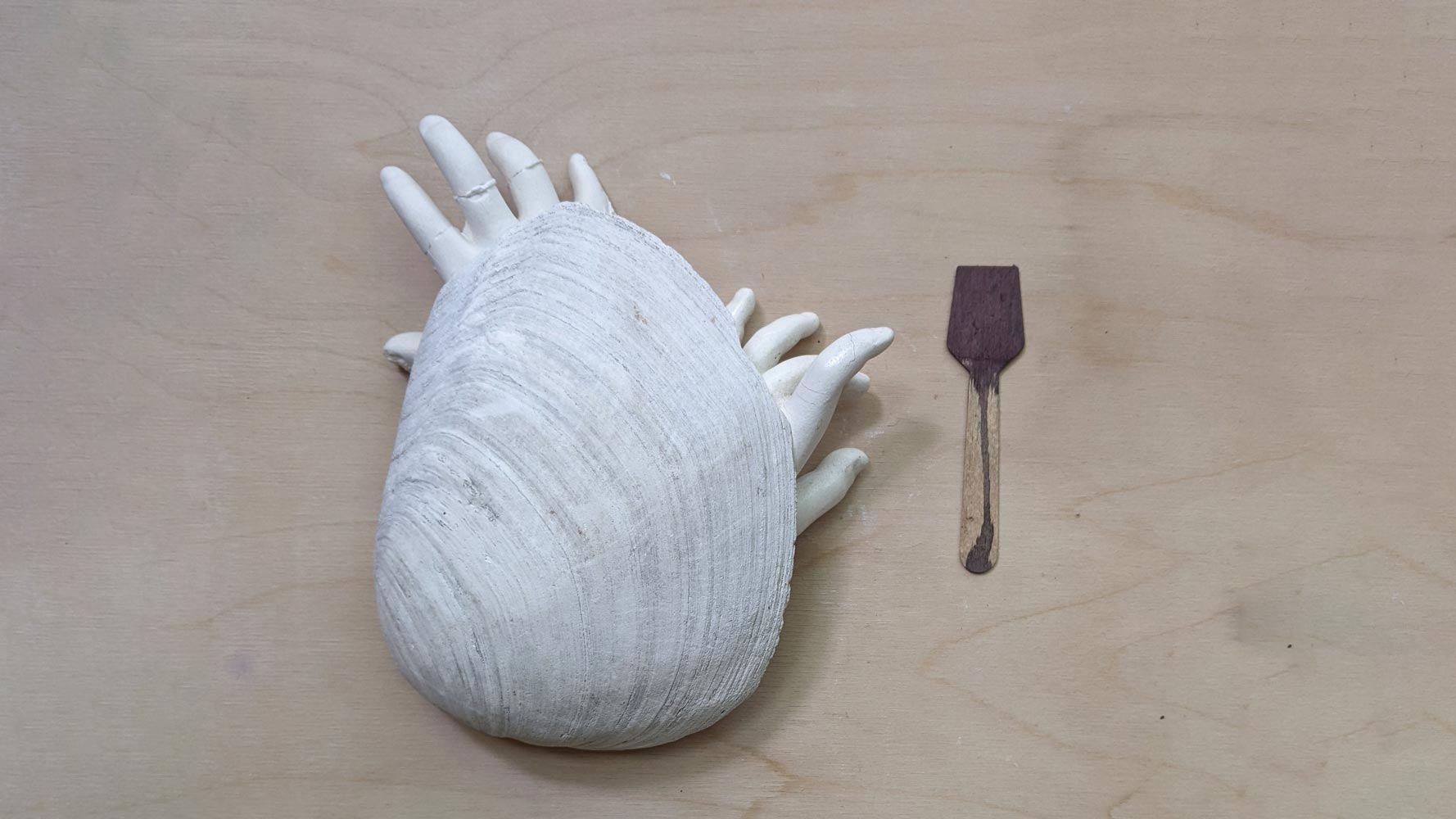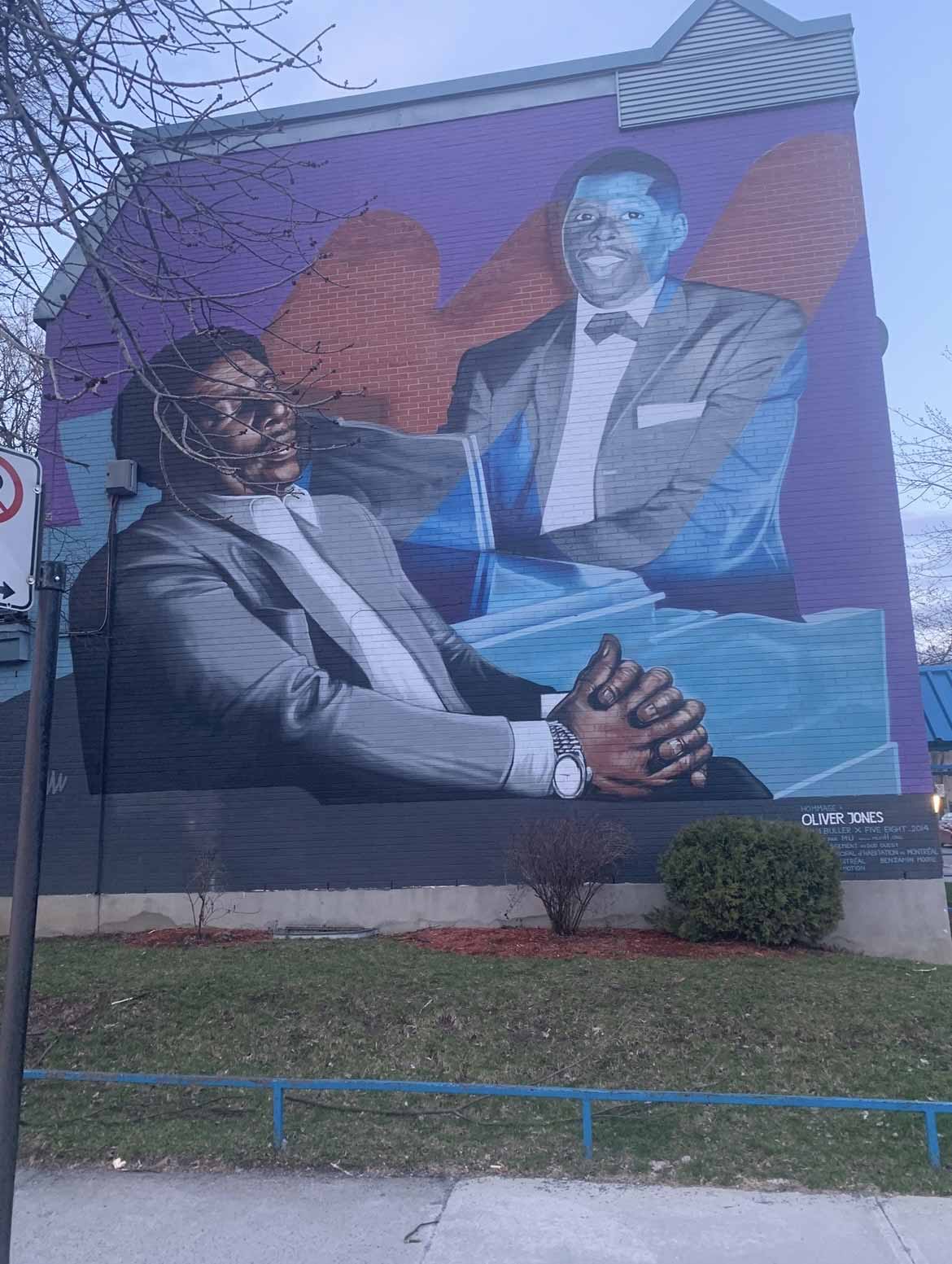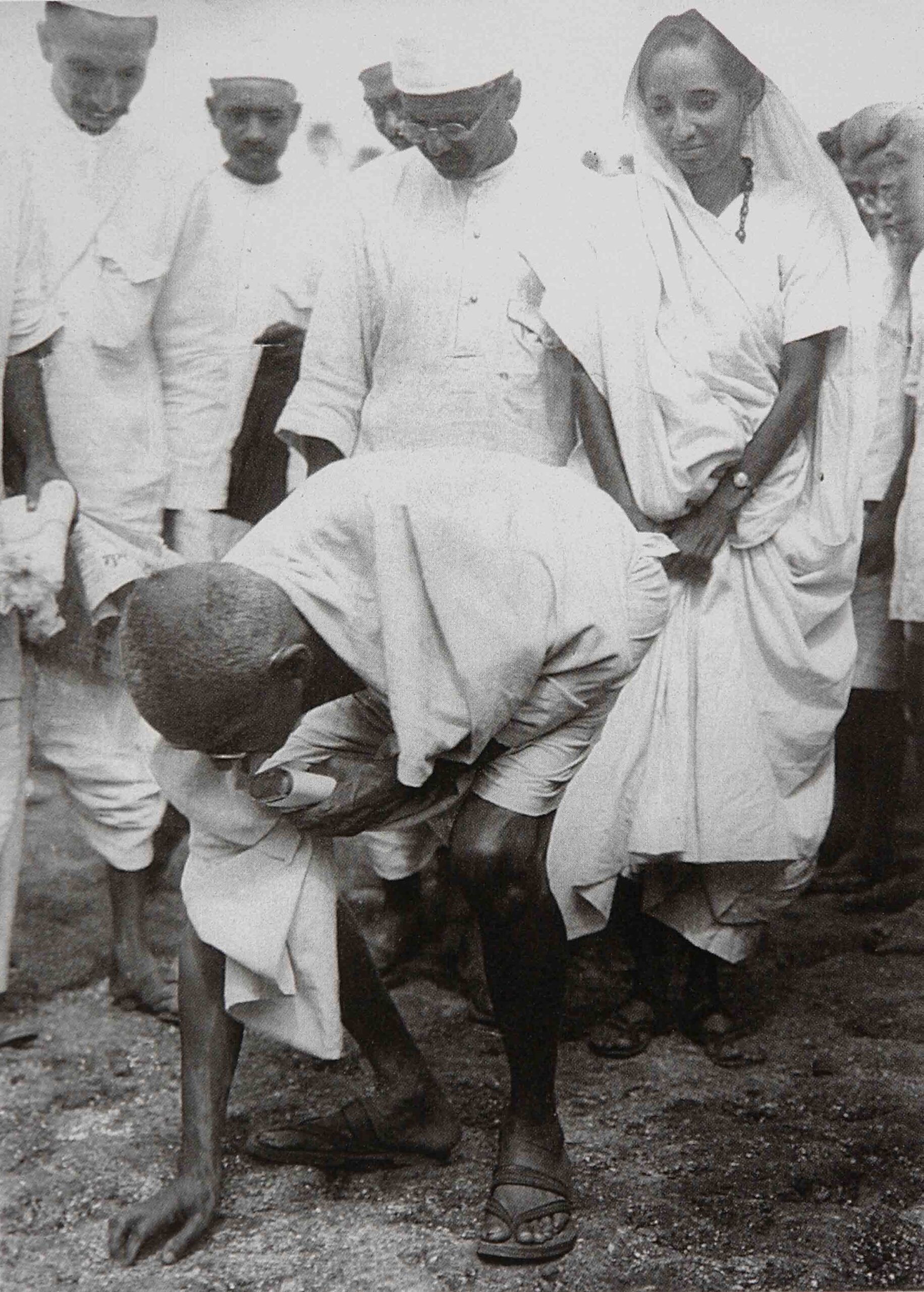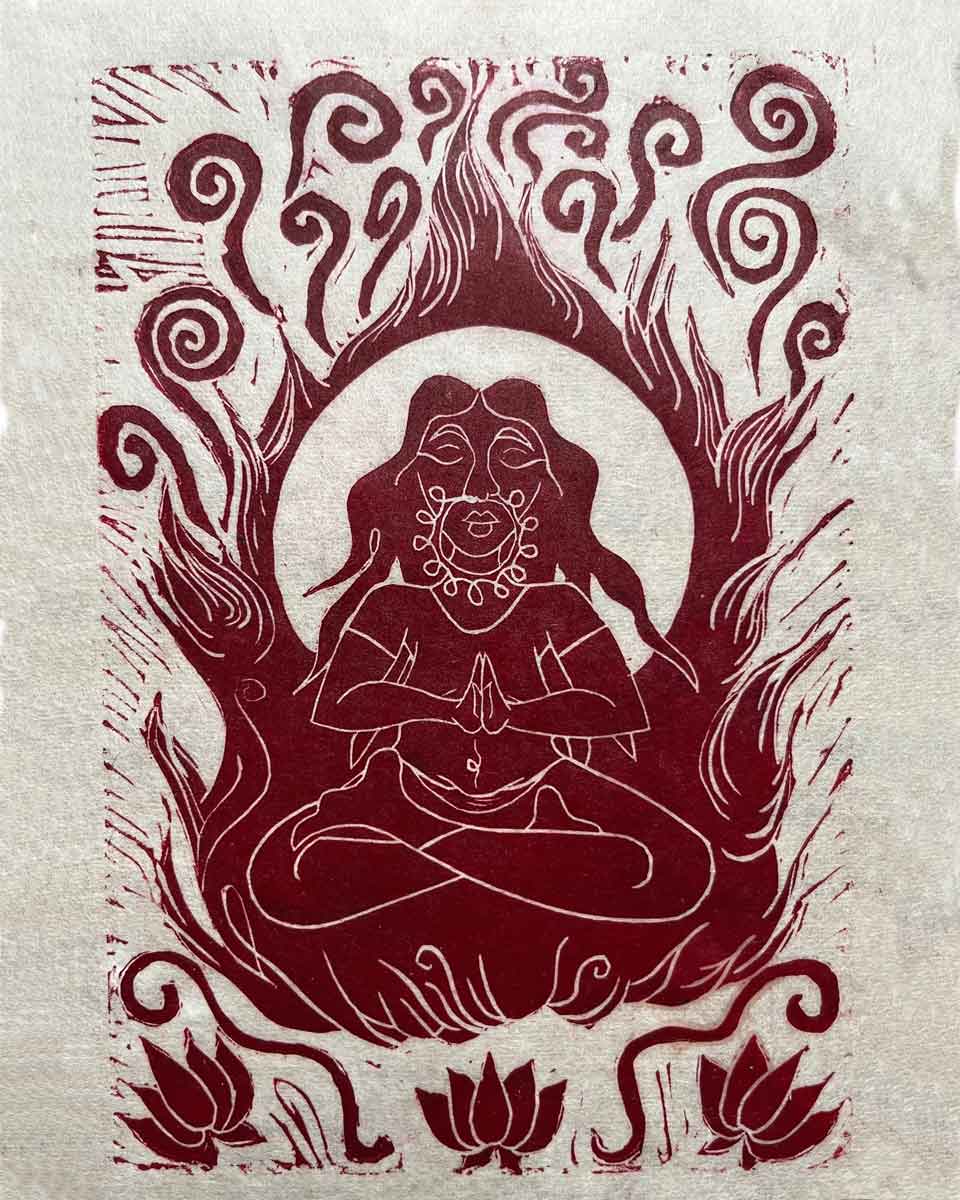Preface by Montréal Serai
A high-profile yet anonymous artist in his hometown Québec City and beyond, Wartin Pantois is a breath of fresh air, a quiet voice of dissidence, a street artist, an agent of change, and a catalysing presence. He appeared on the road as an enigma, with his corpse outlines and paste-ups in black and grey of homeless people shivering under a blanket on a cardboard that from a distance looked like someone real needing help. Since then, he has covered the horrific aspects of drug addiction amongst the young and the old, the Québec City mosque attack, and the need for unity against phobias. Now he has spoken up about the G7 circus. Wartin is not a loudmouth or a megaphone-wielding super activist. He is an instrument of change who speaks with extraordinarily subtle references to collapse and hypocrisy in society.
Artist’s statement
Wartin Pantois is a visual artist and a citizen involved in his community. His art highlights various hidden human realities. His site-specific works reflect a deep social commitment and sensitivity that stem from his social concerns, conversations with citizens and on-site observations. He places his art in the public space to give voice to those who have been silenced, to foster reflection and debate.
“We all build some kind of a shell to protect ourselves from feeling or seeing what would otherwise disturb us. Sometimes a little incentive is needed for people to open their eyes. Art in the public space can be that incentive. Through my work, I try to touch that little core of humanity that everyone has inside. The impetus of an unexpected work of art can be useful. I think that the surprise of seeing art on a street corner might help break through that shell.”
(Free translation of excerpts of a Québec Hebdo interview with Wartin Pantois in October 2016)
Using black and white in contrast with colour-saturated advertisements, Wartin Pantois includes gold leaf in some of his works to question the value given to people and things. The locations of his works are carefully chosen. The places give meaning to his images and, reciprocally, his images give meaning to the places.
Ephemeral works invoking the forgotten
Wartin Pantois fights the erasure of history in his own way, through thought-provoking images in the public space – especially the history of ordinary citizens, who are all too often forgotten.
Québec 1918: 100-year anniversary of the anti-conscription riots
This work calls to mind the citizens’ demonstrations against conscription that occurred during WWI. From March 28 to April 1, 1918, thousands of people took to the streets in riots protesting obligatory military service. There were violent clashes with the Canadian army in which four protesters lost their lives. To oppose the war, they braved death.
“I painted the figures very quickly in broad strokes, feeling somewhat agitated, in tune with the spirit of the rioters who were in a reactive and combative state. I used white paint on black paper to give a ghostly air to the figures, as if history were coming back to haunt those who wanted to forget!”
This project was carried out in collaboration with a collective of historians, La Lanterne. A website was created to highlight the events of 1918: www.Quebec1918.com.
The paste-up was destroyed within hours of going up. No one knows by who or why. A campaign was organized to commemorate the 100-year anniversary in a different way, using posters illustrated by the art piece. One hundred posters (to mark the 100 years since the anti-conscription riots) were placed in neighbourhood book exchange boxes (boîtes à bouquins). All the posters found a taker within a few hours.
The figures in Québec 1918 have given way to their ghosts.

Fabrikarbeiter / Labourers © Wartin Pantois
Site-specific installation, painting on marouflaged paper on walls, SPEMAFA–VEB Spezialmaschinenfabrik abandoned plant, Chemnitz, Germany, 2017
This work was produced as part of the international IBUg Festival of Urban Art, in an abandoned factory. The SPEMAFA food-processing machinery plant was located in Chemnitz, in the industrial heart of the ex-German Democratic Republic, East Germany. It closed in 1933, a few years after the collapse of the Berlin Wall, leaving the workers jobless.
The installation Labourers features three scenes with life-sized workers painted on paper. Their bodies are identical. They have been assembly-line painted, using an alienating work process that breaks down each task into separate steps, evoking factory-type labour. The body is an instrument of production, which has no interest in the uniqueness of individuals. The workers’ faces are all different. They evoke each person’s life and history, their roots and family.
There is strength in unity among workers. The face of the central character in the scene is drawn from the painting “Die Internationale” by the German painter Otto Griebel (1895-1972).
From the student protests for free education to the “pots and pans” solidarity movement, the 2012 “Maple Spring” has left its mark on the Québécois collectivity.
“Five years later, I wondered what remained alive in the citizens’ memory. I created a nomadic art installation featuring protesters and policemen, and moved it around town in Montréal and Québec City to elicit the impressions of passersby and gather their comments.”
Twenty-five people shared their impressions and reflections during this project. Interviews were conducted as the installation was sporadically unveiled in the public space between May 19 and June 9, 2017.
The audio recording of Printemps mémoire is available for free streaming and download at www.wartinpantois.bandcamp.com.
Des œuvres éphémères pour contrer l’oubli
Wartin Pantois est un artiste visuel et un citoyen engagé. Son travail artistique met en lumière diverses réalités contemporaines occultées. Ses interventions artistiques in situ, empreintes de sensibilité et d’engagement, s’élaborent à partir de préoccupations sociales, de discussions avec des citoyens et d’observations sur le terrain. Il utilise le collage à l’échelle humaine pour questionner les rapports sociaux. Il inscrit ses œuvres dans l’espace public comme pour donner la parole aux sans-voix, pour susciter réflexion et débat.
« On se construit tous une certaine protection pour ne pas sentir ce qui pourrait nous toucher, pour ne pas voir ce qui nous dérange, c’est un peu comme une carapace. Parfois il faut un petit incitatif pour ouvrir les yeux. L’art dans l’espace public peut être cet incitatif. Par mes interventions, j’essaie de toucher le petit bout d’humanité que chacun porte. L’intermédiaire d’une œuvre à laquelle on ne s’attend pas peut être utile. Je me dis que l’effet de surprise d’une œuvre inattendue, au détour d’une rue, peut déjouer un peu la carapace! » (Wartin Pantois en entrevue à Québec Hebdo en octobre 2016).
Usant du noir et blanc en contrepoint aux publicités saturées de couleurs, Wartin Pantois intègre la feuille d’or à certaines de ses œuvres afin d’interroger la valeur accordée aux personnes et aux choses. L’emplacement de ses œuvres est soigneusement choisi. Les lieux font parler ses images et, réciproquement, ses images font parler les lieux. Certains de ses projets intègrent des entretiens audio enregistrés avec le public.
Wartin Pantois est street artist, peintre et photographe qui vit et crée dans le quartier Saint-Roch à Québec. Il a effectué des interventions artistiques hors murs et des installations intérieures en Allemagne, au Portugal et au Canada. Il a également produit plusieurs projets musicaux. Il détient un baccalauréat et une maîtrise en sociologie. Ses interventions artistiques sont couvertes par les médias locaux et nationaux.
Il travaille dans l’anonymat. Ses collaborateurs et diffuseurs acceptent de protéger sa véritable identité. Pour en savoir plus sur Wartin Pantois, vous pouvez consulter sa page web (www.wartinpantois.com), sa page Facebook (www.facebook.com/wartinpantois) ou sa page Instagram (www.instagram.com/wartinpantois). Vous pouvez aussi le chercher dans les rues du quartier Saint-Roch à Québec !
